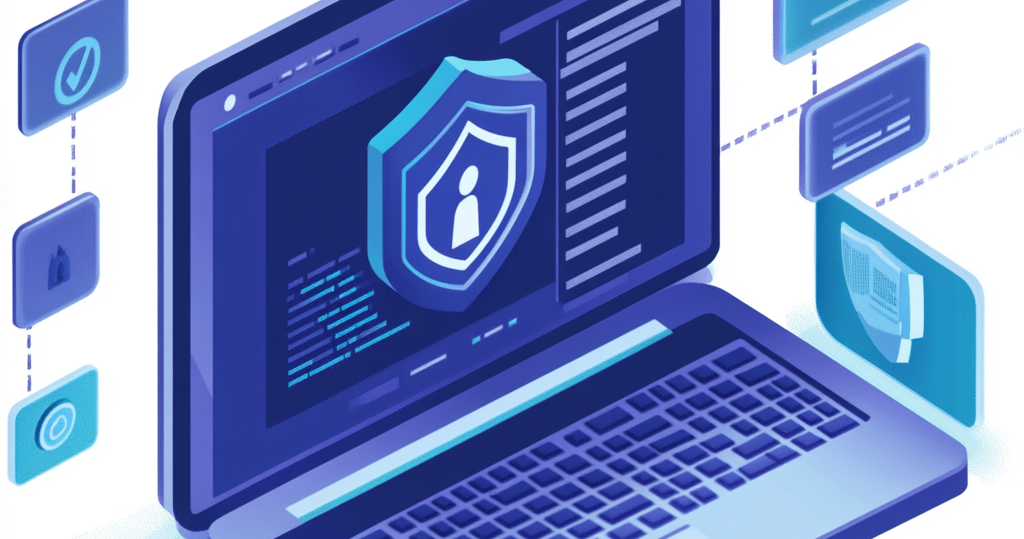In today’s digital landscape, organizations face an ever-increasing number of cyber threats. To combat these challenges effectively, many businesses are turning to cloud SIEM solutions. This comprehensive guide will explore what cloud-based SIEM solutions are, their benefits, key features, and how they can streamline your threat detection processes.
What are Cloud SIEM Solutions?
Security Information and Event Management (SIEM) is a crucial component of modern cybersecurity strategies. SIEM systems collect, analyze, and correlate data from various sources across an organization’s IT infrastructure to detect and respond to security threats.
Cloud-based SIEM solutions offer several advantages over traditional on-premises SIEM systems:
- Scalability: Easily adjust resources based on your needs
- Cost-effectiveness: Reduce upfront investment and ongoing maintenance costs
- Accessibility: Access your SIEM data and tools from anywhere with an internet connection
- Automatic updates: Stay current with the latest features and threat intelligence
- Rapid deployment: Get up and running quickly without extensive infrastructure setup
Key Features of Cloud SIEM Solutions
When evaluating cloud SIEM solutions, look for the following key features:
1. Log Collection and Aggregation
Cloud SIEM solutions should be able to collect and aggregate log data from a wide range of sources, including:
- Network devices
- Servers and applications
- Cloud services and infrastructure
- Security appliances (firewalls, IDS/IPS, etc.)
- Endpoint devices
2. Real-time Threat Detection
Advanced threat detection capabilities are crucial for identifying potential security incidents quickly. Look for:
- Machine learning and behavioral analytics
- Correlation rules and anomaly detection
- Integration with threat intelligence feeds
3. Automated Incident Response
Many cloud-based SIEM solutions offer automated response capabilities to help contain and mitigate threats quickly:
- Predefined playbooks for common incident types
- Integration with security orchestration and automation (SOAR) tools
- Automated alert triage and prioritization
4. Compliance Reporting
To support regulatory compliance efforts, they should provide:
- Pre-built compliance report templates
- Customizable dashboards and reporting tools
- Data retention and archiving capabilities
5. User and Entity Behavior Analytics (UEBA)
UEBA helps identify insider threats and compromised accounts by analyzing patterns of user behavior:
- Baseline establishment of normal user behavior
- Detection of anomalies that may indicate a security threat
- Risk scoring for users and entities
6. Cloud-Native Architecture
True cloud SIEM solutions are built with cloud-native architectures, offering:
- Multi-tenancy support
- Containerization and microservices
- Elastic scaling to handle variable workloads
7. Integration Capabilities
Look for cloud SIEM solutions that can integrate with your existing security tools and processes:
- API support for custom integrations
- Pre-built connectors for common security tools
- Support for standard data formats (e.g., CEF, Syslog)
Benefits of Cloud SIEM Solutions
Implementing cloud-based SIEM solutions can offer numerous benefits to organizations of all sizes:
1. Improved Scalability and Flexibility
They allow you to easily scale your security operations up or down based on your needs. This flexibility is particularly valuable for:
- Organizations with seasonal fluctuations in activity
- Rapidly growing businesses
- Companies with variable or unpredictable security needs
2. Cost-Effectiveness
By moving to a cloud-based model, organizations can reduce the total cost of ownership for their SIEM solution:
- Lower upfront investment in hardware and infrastructure
- Reduced ongoing maintenance and support costs
- Pay-as-you-go pricing models for more predictable budgeting
3. Enhanced Threat Detection Capabilities
Cloud SIEM solutions often leverage advanced technologies and vast amounts of data to improve threat detection:
- Machine learning algorithms that improve over time
- Access to broader threat intelligence data
- Ability to detect complex, multi-stage attacks
4. Faster Deployment and Time-to-Value
They can be deployed much more quickly than traditional on-premises systems:
- No need for extensive hardware setup
- Pre-configured use cases and correlation rules
- Rapid onboarding of data sources
5. Automatic Updates and Maintenance
With cloud-based SIEM solutions, you always have access to the latest features and security updates:
- Regular feature updates without downtime
- Continuous improvement of detection capabilities
- Reduced burden on internal IT teams
6. Improved Accessibility and Collaboration
Cloud SIEM solutions offer greater accessibility, enabling:
- Remote access for distributed security teams
- Easier collaboration between team members
- Mobile access for on-the-go threat monitoring
7. Enhanced Data Analytics and Reporting
Many of them offer advanced analytics and reporting capabilities:
- Big data analytics for large-scale log analysis
- Customizable dashboards and visualizations
- AI-powered insights and recommendations
Challenges and Considerations
While cloud SIEM solutions offer many benefits, there are also some challenges and considerations to keep in mind:
1. Data Privacy and Compliance
When moving sensitive security data to the cloud, organizations must ensure:
- Compliance with data protection regulations (e.g., GDPR, HIPAA)
- Proper data encryption and access controls
- A clear understanding of the provider’s data-handling practices
2. Network Latency and Bandwidth
Sending large volumes of log data to the cloud can impact network performance:
- Consider the impact on your network bandwidth
- Evaluate options for local log collection and forwarding
- Assess the provider’s global data center presence
3. Integration with Legacy Systems
Some organizations may face challenges integrating cloud SIEM solutions with legacy systems:
- Evaluate the solution’s support for various log formats and protocols
- Consider using log forwarders or agents for older systems
- Plan for potential data normalization issues
4. Customization and Flexibility
While cloud SIEM solutions offer many out-of-the-box capabilities, some organizations may require extensive customization:
- Assess the solution’s customization options
- Evaluate the availability of professional services for complex deployments
- Consider hybrid SIEM approaches for specific use cases
5. Vendor Lock-in
Migrating between cloud SIEM solutions can be challenging:
- Carefully evaluate long-term contract commitments
- Understand the process for data export and migration
- Consider solutions with open APIs and standard data formats
Best Practices for Implementing Cloud SIEM Solutions
To maximize the benefits of cloud-based SIEM solutions, consider the following best practices:
1. Define Clear Objectives
Before implementing a cloud SIEM solution, clearly define your security objectives and use cases.
2. Start with a Pilot Program
Begin with a small-scale deployment to gain experience with the cloud SIEM solution and identify any potential issues.
3. Prioritize Data Sources
Identify and prioritize the most critical data sources for initial integration with your cloud SIEM solution.
4. Develop a Data Retention Strategy
Establish clear policies for data retention, considering both security needs and compliance requirements.
5. Invest in Training
Provide adequate training for your security team to ensure they can effectively use the cloud SIEM solution.
6. Regularly Review and Tune
Continuously review and tune your cloud SIEM solution to improve its effectiveness and efficiency.
7. Leverage Automation
Take advantage of the automation capabilities offered by cloud SIEM solutions to streamline your security operations.
8. Implement Strong Access Controls
Ensure that appropriate access controls and authentication mechanisms are in place to protect your cloud SIEM environment.
Conclusion
Cloud SIEM solutions offer a powerful approach to streamlining threat detection and enhancing overall security posture. By leveraging the scalability, flexibility, and advanced capabilities of cloud-based platforms, organizations can improve their ability to detect and respond to security threats while reducing costs and complexity.
As you consider implementing cloud SIEM solutions for your organization, carefully evaluate your specific needs, challenges, and objectives. By following best practices and staying informed about emerging trends, you can maximize the benefits of cloud-based SIEM and strengthen your overall cybersecurity defenses.


